Evaluation of Subsidy Programmes
This research group focuses on two main research questions: (i) What is the causal effect of cooperative innovation activities on the performance of firms and regions? (ii) What are the causal effects of public Research and Development (R&D) support schemes on the performance of firms and regions? The first research question concerns the dynamics of firms and regions as a result of their different innovation activities. We apply a micro-based integrative perspective on innovative activities which allows identifying causal effects of cooperative activities on specific outcomes (e. g., patent applications, scientific publications, employment growth, or productivity growth). Concerning the second research question, recent studies mainly focus on the evaluation of one specific subsidy scheme. Research in this group aims to overcome this shortcoming by considering various support schemes. Indicators for the firms’ success are (amongst others) patent applications and employment growth. The results allow insights for the future design of innovation support schemes.
Centre for Evidence-based Policy Advice (IWH-CEP)
Research Cluster
Economic Dynamics and StabilityYour contact

Mitglied - Department Präsidialbereich
EXTERNAL FUNDING
09.2019 ‐ 09.2022
Establishing Evidence-based Evaluation Methods for Subsidy Programmes in Germany (EVA-KULT)
European Regional Development Fund (ERDF)
The project aims at expanding the Centre for Evidence-based Policy Advice at the Halle Institute for Economic Research (IWH-CEP).
01.2018 ‐ 12.2020
Networked growth - Innovative Saxony-Anhalt through digital business models (Competence Center 4.0)
Federal Ministry for Economic Affairs and Energy (BMWI)
01.2017 ‐ 12.2018
Political Participation in Eastern Germany
Federal Ministry for Economic Affairs and Energy (BMWI)
12.2015 ‐ 11.2018
Socio-economic Effects of Research on Innovative Approaches for POC Diagnostics
Federal Ministry of Education and Research (BMBF)
Part of the EXASENS project. Coordinated by the Leibniz Institute of Photonic Technology (IPHT) in Jena, nine Leibniz institutes are working together on researching point-of-care (POC) technology for the prediction and diagnosis of chronic inflammatory respiratory diseases. See press release.
02.2017 ‐ 02.2018
The Importance of Non-University Research Institutions for the Development of Firms and Regions (Be_For_Reg-Projekt)
Federal Ministry of Education and Research (BMBF)
01.2015 ‐ 12.2016
Evaluation of the "Joint Task 'Improving the Regional Economic Structure'" in the Federal State of Saxony-Anhalt
Investitionsbank Sachsen-Anhalt
Refereed Publications
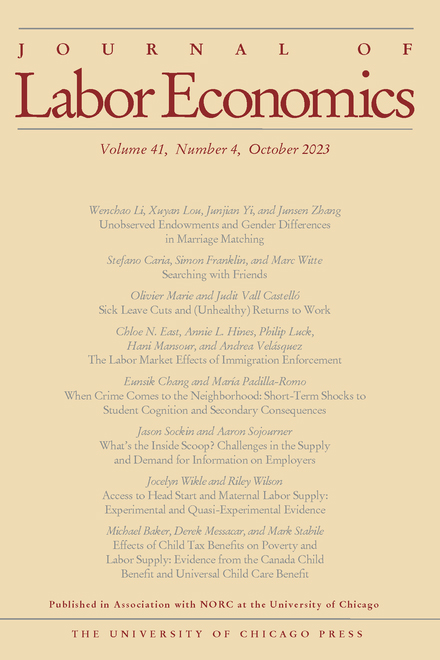
Unemployment in the Great Recession: A Comparison of Germany, Canada, and the United States
in: Journal of Labor Economics, S1 Part 2 2016
Abstract
This paper looks at the surprisingly different labor market performance of the United States, Canada, Germany, and several other OECD countries during and after the Great Recession of 2008–9. A first important finding is that the large employment swings in the construction sector linked to the boom and bust in US housing markets is an important factor behind the different labor market performances of the three countries. We also find that cross-country differences among OECD countries are consistent with a conventional Okun relationship linking gross domestic product growth to employment performance.

The Structure and Evolution of Inter-sectoral Technological Complementarity in R&D in Germany from 1990 to 2011
in: Journal of Evolutionary Economics, No. 4, 2015
Abstract
Technological complementarity is argued to be a crucial element for effective R&D collaboration. The real structure is, however, still largely unknown. Based on the argument that organizations’ knowledge resources must fit for enabling collective learning and innovation, we use the co-occurrence of firms in collaborative R&D projects in Germany to assess inter-sectoral technological complementarity between 129 sectors. The results are mapped as complementarity space for the Germany economy. The space and its dynamics from 1990 to 2011 are analyzed by means of social network analysis. The results illustrate sectors being complements both from a dyadic and portfolio/network perspective. This latter is important, as complementarities may only become fully effective when integrated in a complete set of different knowledge resources from multiple sectors. The dynamic perspective moreover reveals the shifting demand for knowledge resources among sectors at different time periods.
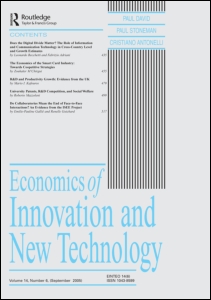
R&D Cooperation with Scientific Institutions: A Difference-in-difference Approach
in: Economics of Innovation and New Technology, No. 5, 2016
Abstract
Economists and business managers have long been interested in the impact of research and development (R&D) cooperation with scientific institutions on the innovation performance of firms. Recent research identifies a positive correlation between these two variables. This paper aims to contribute to the identification of the relationship between R&D cooperation with scientific institutions and the product and process innovation performance of firms by using a difference-in-difference approach. In doing so, we distinguish between two different types of scientific institutions: universities and governmental research institutes. For the econometric analyses, we use data from the German Community Innovation Survey. In total, data from up to 560 German service and manufacturing firms are available for the difference-in-difference analyses. The results suggest that R&D cooperation with universities and governmental research institutes has a positive effect on both product innovation and process innovation performance of firms.
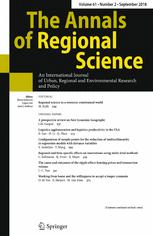
On the Trail of Core–periphery Patterns in Innovation Networks: Measurements and New Empirical Findings from the German Laser Industry
in: Annals of Regional Science, No. 1, 2015
Abstract
It has been frequently argued that a firm’s location in the core of an industry’s innovation network improves its ability to access information and absorb technological knowledge. The literature has still widely neglected the role of peripheral network positions for innovation processes. In addition to this, little is known about the determinants affecting a peripheral actors’ ability to reach the core. To shed some light on these issues, we have employed a unique longitudinal dataset encompassing the entire population of German laser source manufacturers (LSMs) and laser-related public research organizations (PROs) over a period of more than two decades. The aim of our paper is threefold. First, we analyze the emergence of core–periphery (CP) patterns in the German laser industry. Then, we explore the paths on which LSMs and PROs move from isolated positions toward the core. Finally, we employ non-parametric event history techniques to analyze the extent to which organizational and geographical determinates affect the propensity and timing of network core entries. Our results indicate the emergence and solidification of CP patterns at the overall network level. We also found that the paths on which organizations traverse through the network are characterized by high levels of heterogeneity and volatility. The transition from peripheral to core positions is impacted by organizational characteristics, while an organization’s geographical location does not play a significant role.
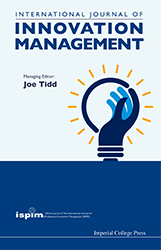
R&D Collaboration for Environmental Innovation
in: International Journal of Innovation Management, No. 1, 2015
Abstract
The literature on the impact of R&D collaboration on environmental innovation performance of firms suggests that R&D collaboration is not always beneficial. Therefore, a more detailed analysis of the effects of R&D collaboration is necessary. This paper investigates the impact of R&D collaboration with different partner types on a firm’s environmental innovation performance. In addition, the paper addresses the question of whether the diversity of R&D collaboration partners is important to environmental innovation performance. Firm-level data from 2337 German firms are used in the regression analysis. The results suggest that R&D collaboration with suppliers, customers, universities, governmental research institutes, consultants and other firms within the same firm group has a significant positive impact on a firm’s environmental innovation performance, whereas collaboration with competitors has no significant impact. The diversity of R&D collaboration partners has a significantly positive impact on a firm’s environmental innovation performance.
Working Papers
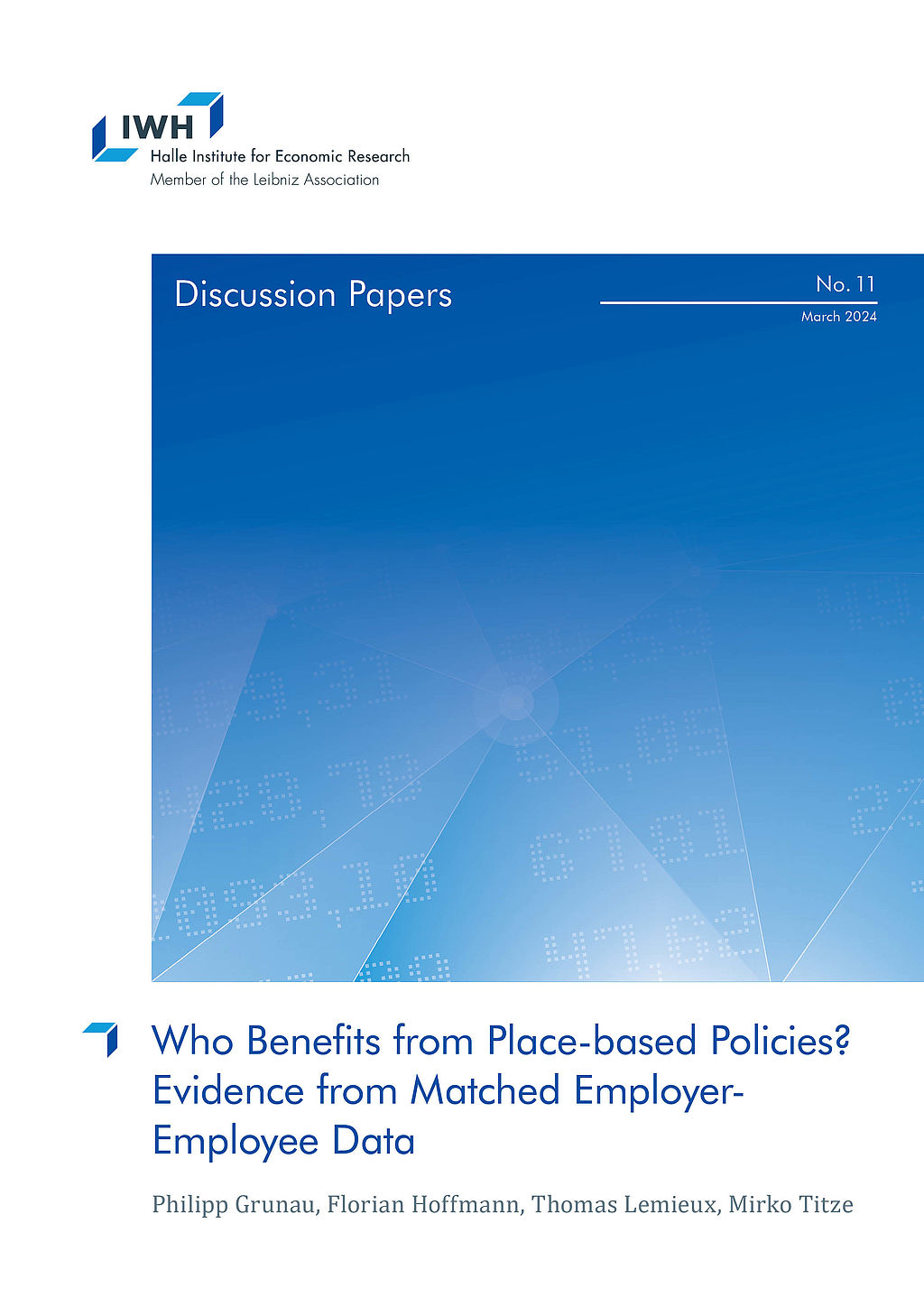
Who Benefits from Place-based Policies? Evidence from Matched Employer-Employee Data
in: IWH Discussion Papers, No. 11, 2024
Abstract
We study the wage and employment effects of a German place-based policy using a research design that exploits conditionally exogenous EU-wide rules governing the program parameters at the regional level. The place-based program subsidizes investments to create jobs with a subsidy rate that varies across labor market regions. The analysis uses matched data on the universe of establishments and their employees, establishment-level panel data on program participation, and regional scores that generate spatial discontinuities in program eligibility and generosity. These rich data enable us to study the incidence of the place-based program on different groups of individuals. We find that the program helps establishments create jobs that disproportionately benefit younger and less-educated workers. Funded establishments increase their wages but, unlike employment, wage gains do not persist in the long run. Employment effects estimated at the local area level are slightly larger than establishment-level estimates, suggesting limited spillover effects. Using subsidy rates as an instrumental variable for actual subsidies indicates that it costs approximately EUR 25,000 to create a new job in the economically disadvantaged areas targeted by the program.
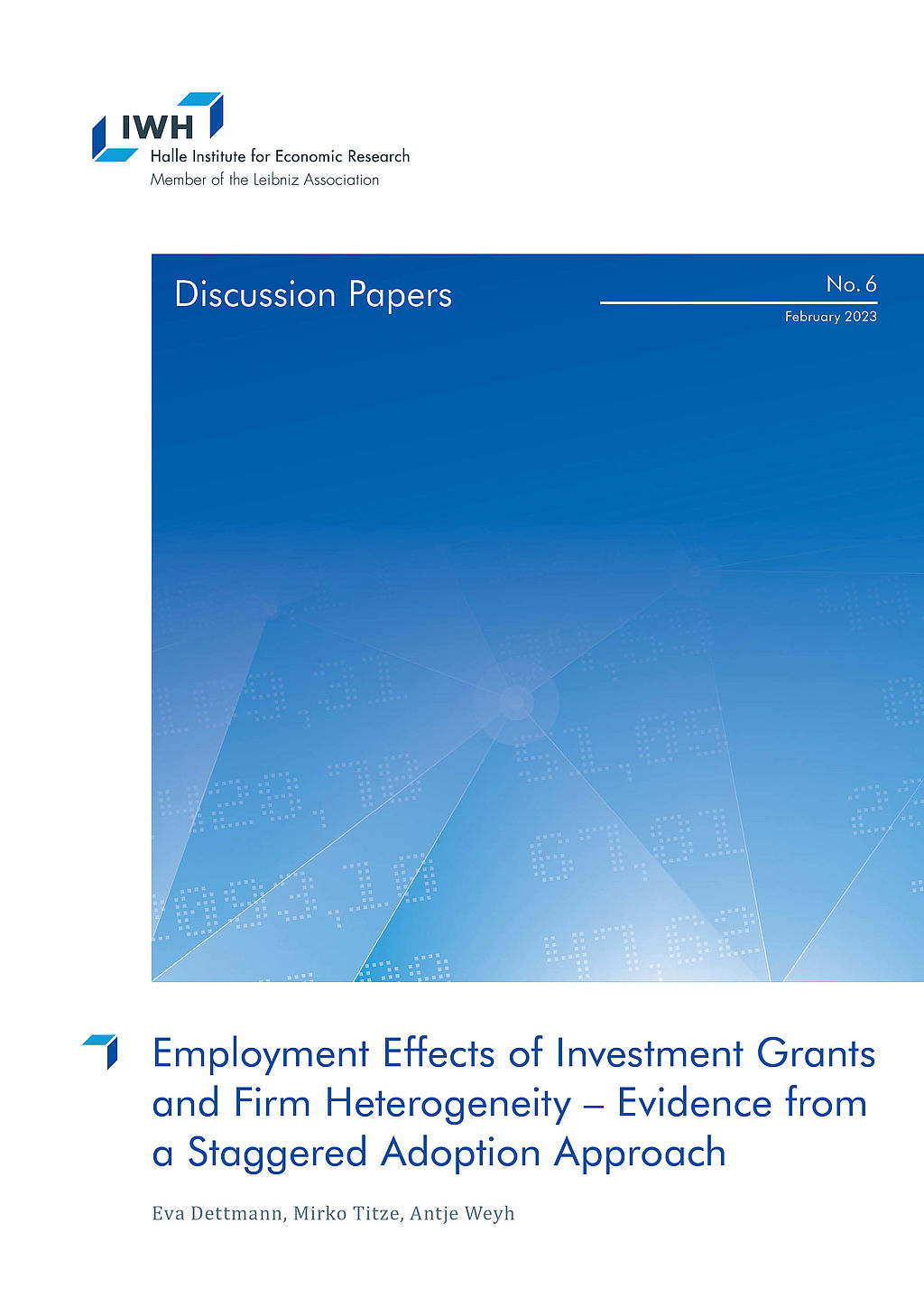
Employment Effects of Investment Grants and Firm Heterogeneity – Evidence from a Staggered Adoption Approach
in: IWH Discussion Papers, No. 6, 2023
Abstract
This study estimates the establishment-level employment effects of investment grants in Germany. In addition to the average treatment effect for the treated, we focus on discrimination in the funding rules as potential source of effect heterogeneity. We combine the difference-in-differences approach of Callaway and Sant’Anna (2021) that explicitly models variation in treatment timing with a ties matching at the cohort level. We observe a positive effect of investment grants on employment development in the full sample. The subsample analysis yields strong evidence for effect heterogeneity due to firm characteristics and the economic environment.
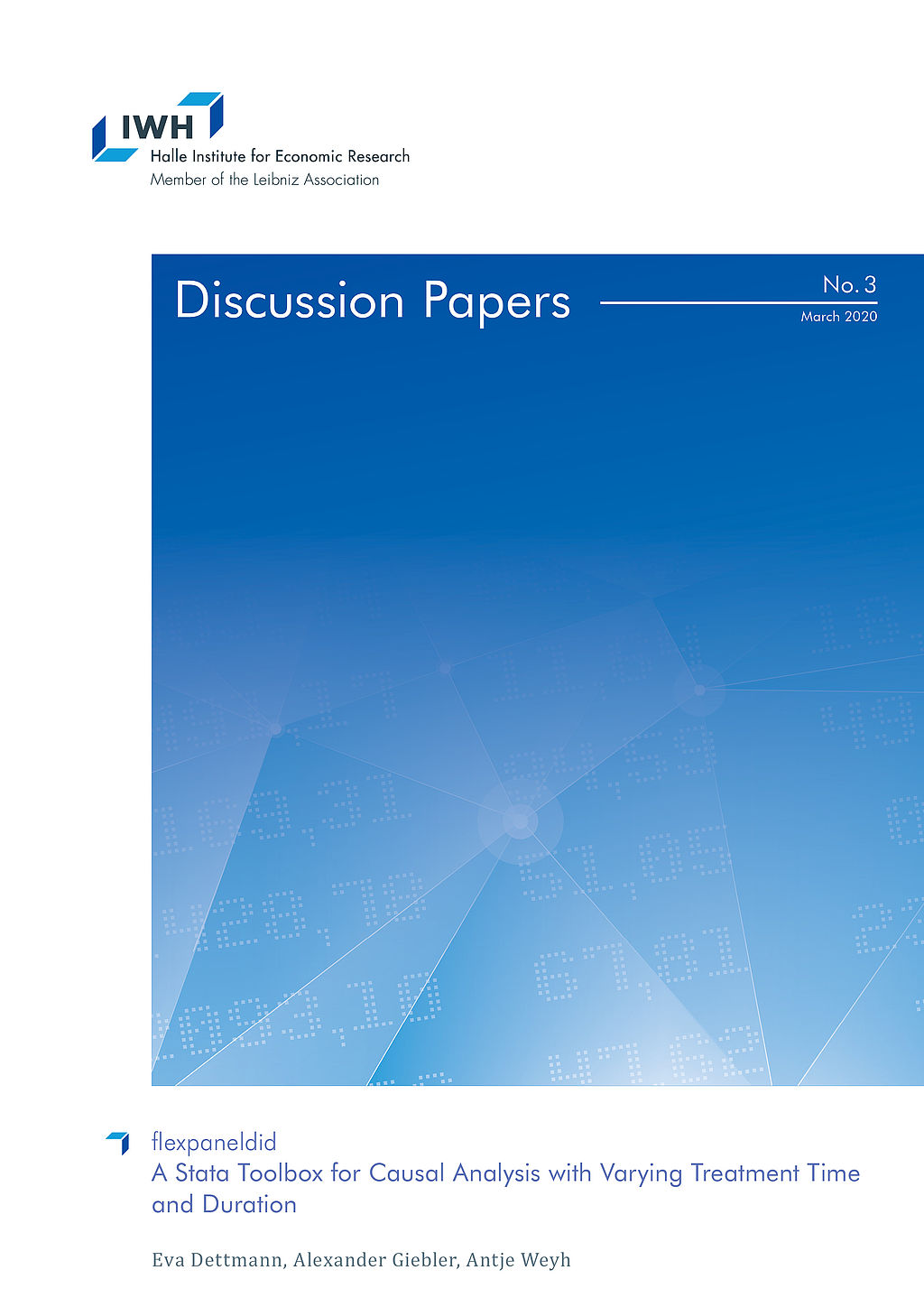
flexpaneldid: A Stata Toolbox for Causal Analysis with Varying Treatment Time and Duration
in: IWH Discussion Papers, No. 3, 2020
Abstract
The paper presents a modification of the matching and difference-in-differences approach of Heckman et al. (1998) for the staggered treatment adoption design and a Stata tool that implements the approach. This flexible conditional difference-in-differences approach is particularly useful for causal analysis of treatments with varying start dates and varying treatment durations. Introducing more flexibility enables the user to consider individual treatment periods for the treated observations and thus circumventing problems arising in canonical difference-in-differences approaches. The open-source flexpaneldid toolbox for Stata implements the developed approach and allows comprehensive robustness checks and quality tests. The core of the paper gives comprehensive examples to explain the use of the commands and its options on the basis of a publicly accessible data set.
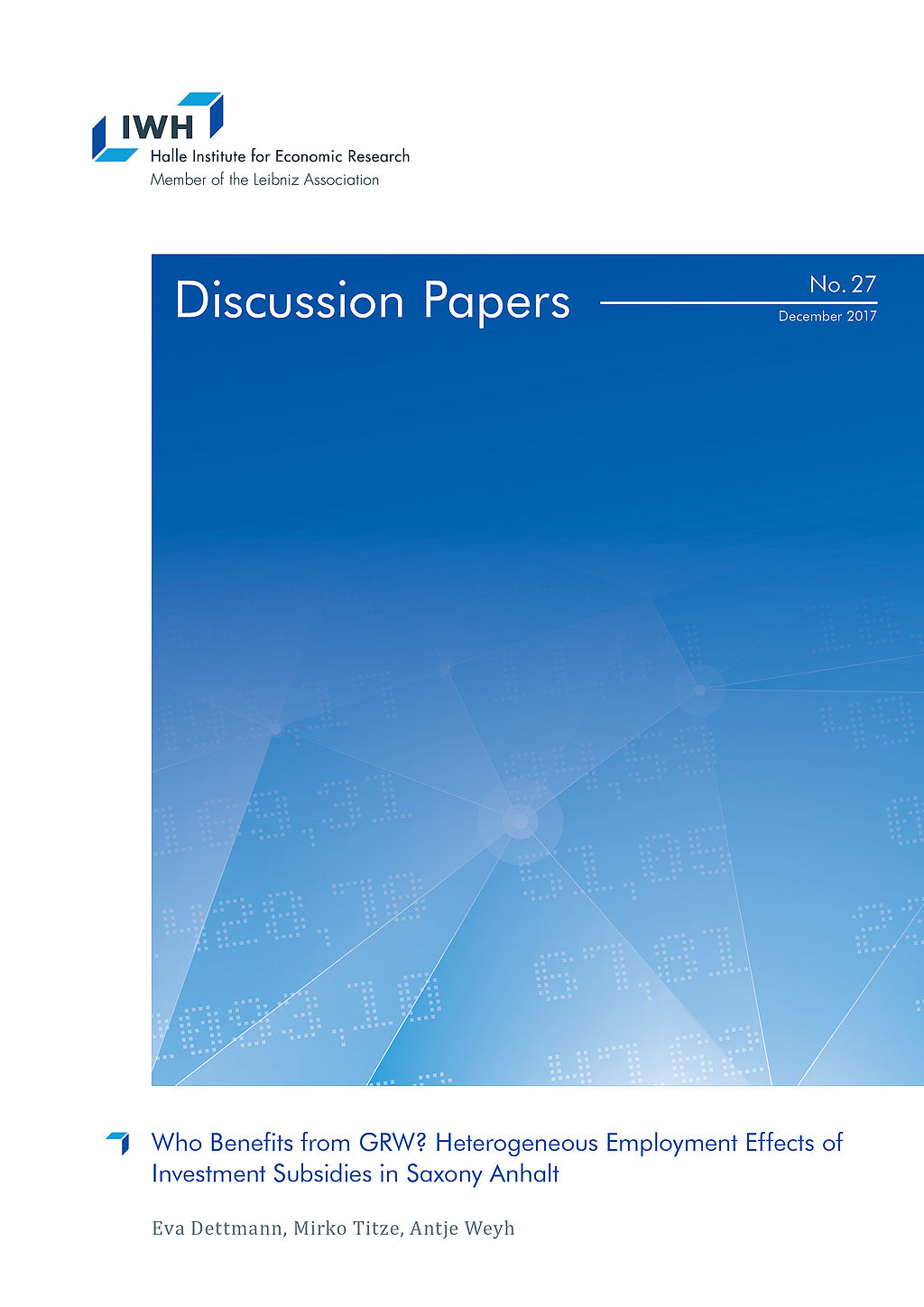
Who Benefits from GRW? Heterogeneous Employment Effects of Investment Subsidies in Saxony Anhalt
in: IWH Discussion Papers, No. 27, 2017
Abstract
The paper estimates the plant level employment effects of investment subsidies in one of the most strongly subsidized German Federal States. We analyze the treated plants as a whole, as well as the influence of heterogeneity in plant characteristics and the economic environment. Modifying the standard matching and difference-in-difference approach, we develop a new procedure that is particularly useful for the evaluation of funding programs with individual treatment phases within the funding period. Our data base combines treatment, employment and regional information from different sources. So, we can relate the absolute effects to the amount of the subsidy paid. The results suggest that investment subsidies have a positive influence on the employment development in absolute and standardized figures – with considerable effect heterogeneity.
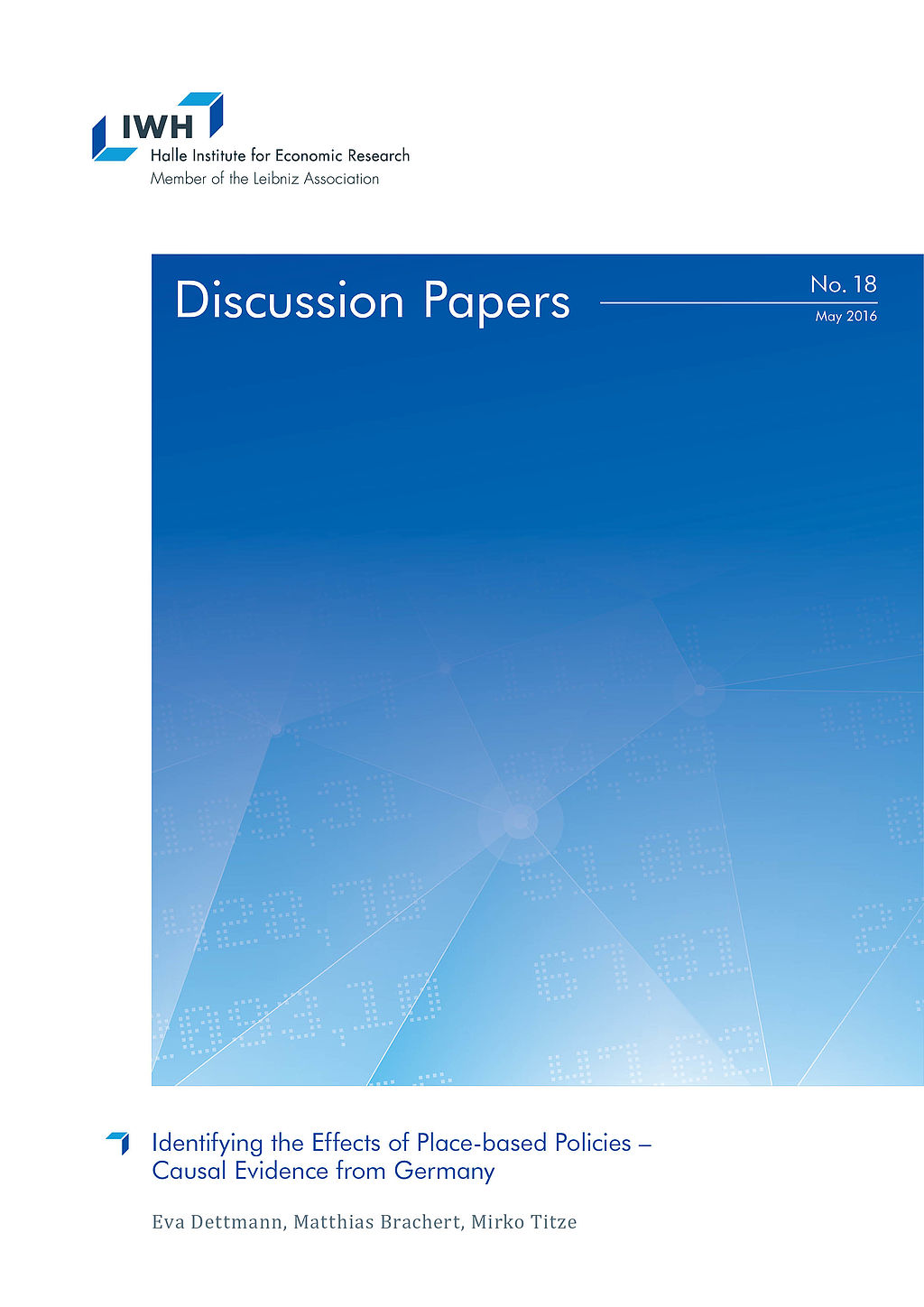
Identifying the Effects of Place-based Policies – Causal Evidence from Germany
in: IWH Discussion Papers, No. 18, 2016
Abstract
The German government provides discretionary investment grants to structurally weak regions to reduce regional disparities. We use a regression discontinuity design that exploits an exogenous discrete jump in the probability of receiving investment grants to identify the causal effects of the investment grant on regional outcomes. We find positive effects for regional gross value-added and productivity growth, but no effects for employment and gross wage growth.














